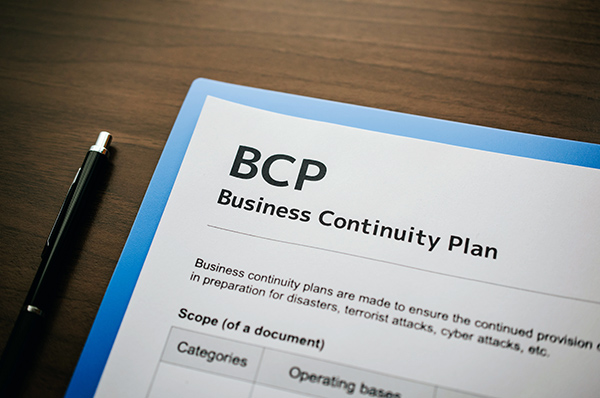
Disaster Recovery through Real-Time Backup
Within any organisation, technology and real-time access to data is the very lifeblood of the enterprise. Every customer interaction, supply chain activity and financial transaction relies on accurate data within database systems. Because of the critical nature of a company’s data, it’s important to assure that systems are available and that the integrity of the organisation’s databases is maintained. Any significant down time, or loss of data, can cripple an organisation and result in loss of business, loss of customers and even regulatory sanctions related to data retention.
Companies have to take a proactive approach to data protection, and ensure a continuous and immediate replication of data as changes occur. Real-time backup and replication of data allows a company to quickly recover in the event of system failure. With Continuous Data Protection for businesses, an enterprise can leverage top-notch network security using hardware, software and cloud services. This is especially key if a company faces a ransomware attack that effects their primary data location. When data is protected and replicated in real-time, you can rely on the replicated data to recover and help ensure that an up-to-date version of the latest information is instantly available.
Key Benefits
Real-time backup requires a robust infrastructure to operate seamlessly. When your organisation tests and implements a real-time backup and data replication infrastructure and solution, it allows you to quickly rewind to a point in time just prior to any “disaster” and restore your files. This approach drastically limits any potential data loss and dramatically reduces downtime during hardware failures or other software system issue and data interruptions.
A real-time backup and data replication solution can enable recovery of a whole database infrastructure. Unlike a traditional backup solution, real-time backup provides full protection of your databases because your data is instantly replicated in real time. With traditional backup, data is only backed up at scheduled intervals and in the event of disaster you would lose all data since the last backup occurred.
Basic Facts
Backup and Recovery / Archive
Backups ensure quick recovery from system failures, while archives retain data for legal compliance and historical purposes. Typically, both the backup and archiving are driven by a backup policy. A company’s backups give them the ability to restore their data after any form of disaster, ranging from system or hardware failure to natural disaster and malicious intrusion. Further protection is afforded when the data is stored at an off-site location geographically separate from the primary location.
Creating an air gapped backup at a secure facility, unreachable by hackers or unauthorised personnel, provides an additional, valuable layer of security. For legal and compliance reasons, companies will also have to create archived sets of data that are maintained on a long-term basis prescribed by laws and statutes.
Disaster Recovery
Disaster recovery strategies ensure that a business or organisation can recover quickly from catastrophic incidents while minimising disruptions. Typically, a robust disaster recovery plan would include data replication to a secondary site that is far enough away from a primary location that it would not be affected in the event of a natural disaster at the primary location. Real-time replication of mission-critical data allows for far faster recovery than restoration from a scheduled backup. It also helps prevent loss of data that would have occurred since the last scheduled backup.
Business Continuity
Real-time data replication helps guarantee business continuity because there can be a seamless rollover to the secondary data location in the event of system failure or natural disaster. Because the data is current and replicated in a secondary secure location, the business can be up and successfully operating almost immediately after an issue. These solutions are heavily automated, and can be implemented at the storage or application layer. Assured uptime is a must for all mission critical applications.

The Impact of Downtime
Impact of Downtime
If your company’s systems go down and are not available or operating, nearly every activity at the enterprise may suddenly come to an abrupt halt. Users throughout the company or organisation will not be able to do their job, as the data they need to make key decisions will be unavailable. During this downtime, you will not be able to respond to or care for your customers, ship goods or provide services or conduct any business activities. Supply chain activities will be crippled, and the company will suffer a potentially lasting reputation impact with both vendors and customers.
Cost of Downtime

When evaluating the investment in real-time backup and replication solutions, it’s important that the cost of downtime to a business can be accurately assessed. An organisation should calculate the cost of one hour or one day, or multiple days, of downtime. It’s also critical to determine what SLAs would be missed, and what the business or financial impact of that would be. Potential reputational damage should also be considered. Customers and vendors will be wary of doing business with an enterprise that can not keep their systems running and data protected. Every hour of downtime will weigh on your customers heavily, and may cause them to seek other business partners.
Time to Recover from Downtime
When you design and implement a real-time backup and data recovery solution, it’s not enough to put it in place. You also need a detailed and thorough plan that documents the operations and procedures associated with your disaster recovery plan. Most importantly, you will want to fully test your recovery plan and procedures to assure that everything functions as designed. With full-on testing, you will know exactly how long it will take to bring your mission-critical system back online for your business to operate. Testing will also help assure that the tool has been deployed correctly.
Full Protection with No Impact
With a robust real-time backup and data replication solution, your company will be fully protected with no production impact. No scheduling, agents or snapshots are required. The solution will be hardware and storage system agnostic, and can protect on-premises, to the cloud or both simultaneously. Most importantly, it will always be on and you will always be protected.
Granular, Point-in-Time Recovery
When a backup solution applies dynamic journaling, it’s possible to recover in minutes to seconds before an attack or disruption. Restoring specific data rather than an entire dataset, and recovering individual files is far more efficient and minimises downtime. These solutions allow businesses to neutralise the threat from malware and ransomware, and take a comprehensive approach of preventive measures, proactive detection and effective response strategies. Such solutions are typically suggested in protecting live databases.
A comprehensive, leading-edge type of solution can also provide the fastest RPOs and RTOs. An RPO is the point in time for data recovery after an outage or loss; a fast RPO minimises loss of data and valuable information. RTO is the maximum time allowed for systems to be restored after a disruption. Fast RTOs allow you to minimise downtime, resume operations quickly and avoid financial losses.